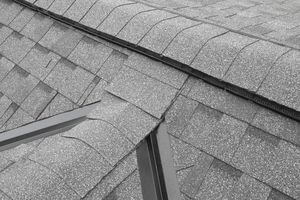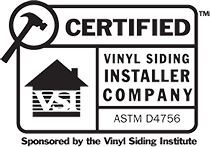Weight is a significant factor in any roofing project. First of all, how much does a bundle of shingles weigh depends on what you’re putting on your roof. The weight will impact the structural integrity of your home. A lot of homes that upgrade from asphalt shingles to ceramic tiles, for example, have to increase the roof’s load-bearing capacity. Secondly, weight impacts your costs.
The shingles you choose and their thickness influence price. Thicker, sturdier shingles typically cost more than lighter, thinner shingles. This isn’t always the case because of recent improvements in shingle quality, but it’s generally the rule that you’ll pay more for heavier shingles.
If you’re upgrading your existing roof or installing a roof on some new construction, understanding the weights you’re dealing with will help your project go smoothly and end in success!
Knowing how much their shingles weigh always plays into the disposal for people replacing their roofs. Waste companies and roof removal services are the businesses you’ll hire to get rid of your old shingles. These services typically base their estimates on how much weight they’ll be taking off your home or commercial building.
By finding out how much does a bundle of shingles weigh, you can avoid expensive charges and costly delays.
How Much Does a Bundle of Shingles Weigh?
The more effort you put into pre-planning your roof replacement or removal, the more money you will save. In addition, you’ll avoid unwelcome surprises and frustrating fees by sorting out everything up front.
As a property owner, you need to find out or calculate the shingle’s weight when replacing and repairing your roof. This goes for complete roof removals or spot repairs after a storm or normal wear and tear.
We mentioned earlier, calculating weight is part of your replacement project, and the weight of your shingles is important to estimating costs around removal and final disposal. Too often, homeowners fail to account for how they get rid of old shingles. Usually, there are too many shingles to simply stick in your garbage can for weekly pickup.
Also, not every roof replacement or installation company handles roof removal. Make sure you understand what they will handle, so they don’t show up and tell you they can’t work because your existing shingles are still on your roof.
Choosing a reliable dumpster service that offers trash removal and the correct weight allowance is one way to go. In this instance, knowing your shingle weight is vital because it will help you understand how much dumpster space you need. If you’re not sure, you may end up paying for too little or too much dumpster space. Zeroing in on precise shingle weight saves money and time.
Factors to Consider Before Buying Shingles

via Douglas Sacha / Getty Images
When it comes to understanding the roofing industry and what you’ll pay for shingles, you need to know some industry terms. One such term is “roofing square.” A roofing square is equal to 100 square feet.
Don’t make the mistake of confusing a single roofing square with a square foot. When you buy shingles, most contractors will quote you in roofing squares.
If your home’s roof measures 600 sq. ft, it equals 6 (six) roofing squares. It is mandatory to understand this terminology to determine the weight of your roofing material.
One interesting aspect of the roofing business is that you sell roof shingles in squares, but people buy them in bundles.
A rule of thumb is that one bundle of shingles can cover one-third 1/3rd of a roofing square.
Remember, the thicker the bundle of shingles is, the more durable it is. So, with thicker shingles, you’re going to need more bundles to cover your roof because the thickness means there are fewer shingles in each bundle.
Depending on the size of your roof and how many bundles you need, you may pay significantly more for thicker, heavy-duty shingle bundles. So it’s something to consider before you buy.
Whether you’re doing calculations on your own or dealing with a contractor, weight and thickness are factors to consider before any work begins. Also, make sure you know how many bundles of each type of shingle you’ll need to cover the area you need.
Different Types of Shingles
These days, there is a lot of variety in shingles. Different colors, shapes, designs, and thicknesses all impact how your roof looks and performs. Unfortunately, not all shingles are the same. The difference starts in manufacturing and makes its way all the way until the shingles hit the shelves.
Your main choices include:
- Thickness
- Design
- Colors
- Material
Shingles typically come in bundles that weigh anywhere from 50 to 85 pounds. The ordinary 3-tab shingles are 50 to 60 pounds. However, as you move up in quality, bundles come in at around 60 to 80 pounds. Higher-end design shingles, for instance, usually weigh more. Cedar shingles are typically the heaviest, and a normal bundle can weigh up to 85 pounds.
Obviously, the amount of moisture in wood shingles plays a big part in how much they weigh. Wet shingles will be much heavier than dry cedar shingles.
Quality of Shingles

Now that we know shingle weight and thickness can vary widely, you need to understand some more about shingle quality.
We’ve already said that thickness is often an indication of quality. The material used to make the shingles also affects durability and performance. Different shingles come with varying warranties and fire resistance as well.
High-quality shingles stand up better in bad weather and will last years longer than lower-quality, more affordable shingles.
Before you ask for the cheapest shingles, you should factor in quality and what sort of maintenance costs you can expect over the lifetime of your roof.
How to Calculate the Cost of a Bundle of Shingles
Calculating the costs of shingles is simple enough. First, you have to know how many roofing squares you’ll need. Then, based on the roofing squares, you need to calculate how many shingle bundles you’ll need. Each bundle should tell you how many squares it will cover.
Transportation costs are something a lot of people forget to factor into the final price of roof installation or roof replacement. Unless you have a pickup truck, you probably need to hire a delivery service or rent a truck yourself. It can add a lot to your price tag.
Let’s do an exercise to help you calculate costs. Follow these steps:
- Decide if you want high-end shingles or shingles made of three-tab asphalt.
- To buy regular shingles, multiply the required roofing squares by the factor of 3.
- Calculate your final cost.
For example, if your roof’s size is six squares, you will need 18 bundles of shingles. Generally, roofing contractors use the following guidelines;
50 to 85 pounds for 1 bundle
150 to 250 pounds for 1 square
You can also use these figures to determine whether your shingles will fit in a heavy load or if you need multiple trips to transport the bundles. But, again, these are general guidelines, and the type of shingles you choose will affect the weight of your bundles.
Weight of one bundle x Total number of bundles x Number of shingle layers = Total Weight
Using this equation, you can conveniently figure out the weight as well as the dumpster size you need for removing old shingles.
If this calculation method seems difficult, try this quick calculation:
The amount of shingle material removed from the roof is equal to the amount of the materials you are going to put on it. That means finding out the total weight of old shingles can help you determine the weight of new shingles. And it will definitely make your job easier.
The overall cost of your home repair project or roof installation may increase if the size and quality of shingles are different.
The Bottom Line
In a nutshell, buying shingles and disposing of old shingles requires a bit of math to get right. No one wants to end up with too many extra shingles after the project is complete, and booking another dumpster when the one you have is too full is never fun.
Any small project is easier to calculate than something larger, like a new roof installation. If you make a mistake, you have to make a quick trip to the store to buy more shingles. However, working with contractors and other workers on larger projects pays to get things right the first time around. Then, you’ll save time and avoid situations where the store runs out of the materials you need because you didn’t secure the proper amount in the beginning.
When in doubt, work with an experienced roofing contractor or someone with experience calculating shingle weight. They’ll make your job a lot easier.












